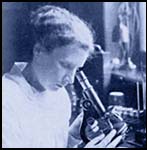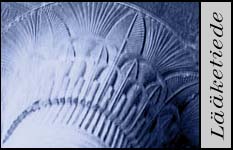 |


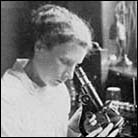
|

AGNES SJÖBERG
Europe's first woman veterinary surgeon
1888-1964
|
 |
 |

Agnes Sjöberg's interest in animals can be traced back to her
childhood on her family's farm. In the 1890's her family
established a school of animal husbandry in the estate's main
building and little Agnes sat among the students and listened.
At the age of ten she attended anatomy classes and studied the
organs of slaughtered calves. She remembered having asked the
teacher whether a girl could become a veterinary surgeon. She
was told that it was an impossible idea.

At the beginning of the 20th century, women aspiring to higher
education had to overcome numerous obstacles. Agnes Sjöberg is
a good example of this. First she attended the Swedish-
language girls school in Vaasa. Only after finishing a school
of household management and having taken care of her family's
household for three years, did her father let her enter upper
secondary school. Sjöberg completed her matriculation
examination as a private student in Kuopio's Swedish-language
co-educational school in 1911.

Having practised her future profession under the supervision
of a veterinary surgeon in Pori, Sjöberg left for Dresden,
Germany, to study veterinary medicine. The confused rector of
the College of Veterinary Medicine consented to admitting
Sjöberg as the first female student of the school, among 300
male students: "After all, a female veterinary surgeon is well
suited to handle small domestic animals". Sjöberg preferred
horses. Her studies were hampered by her Finnish fellow
students, about thirty men, who tried to remove her from the
lecture room when organs considered of a delicate nature were
being discussed. After a year Sjöberg transferred to the
Veterinary College in Berlin.

During the First World War Sjöberg worked in animal clinics in
Berlin and was preparing her doctoral dissertation. The
German-language dissertation in the field of equine
ophthalmology was approved by the University of Leipzig in
1918.

After the war, Sjöberg returned to Finland and worked as a
municipal veterinary surgeon in western Finland. Between 1938
and 1955 she had her own practice in Seinäjoki. She also made
study trips abroad and continued her research, for example, by
spending 18 months in Vienna studying parasites.

Agnes Sjöberg also raised two sons as a single mother.

 1 1
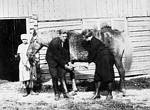 2 2
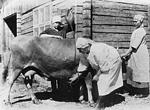 3 3

1 Agnes Sjöberg and a microscope. From her autobiography.

2, 3 Agnes Sjöberg at work in the early 1920s.
Photos: Museum of veterinary science.

|
|
